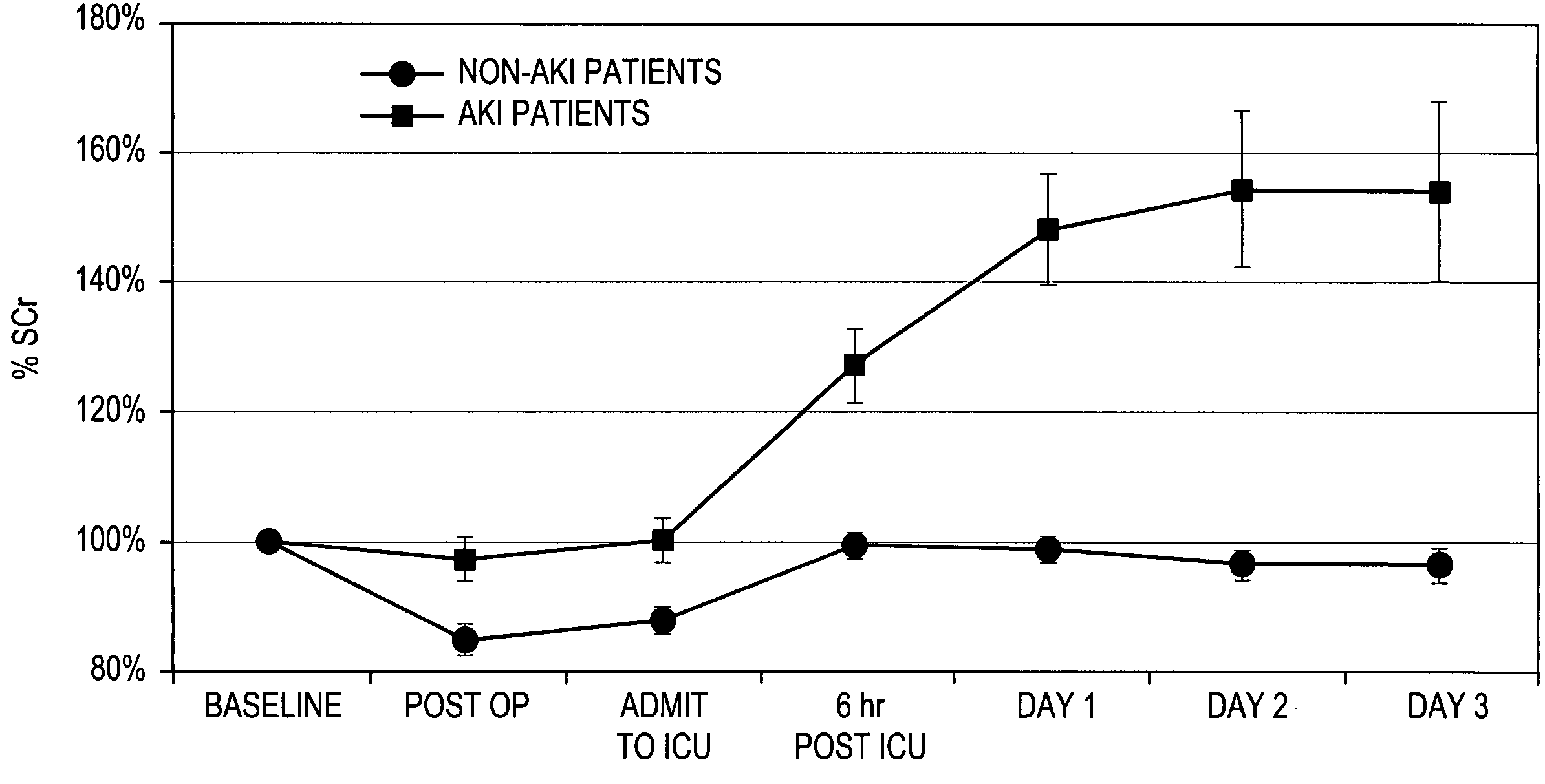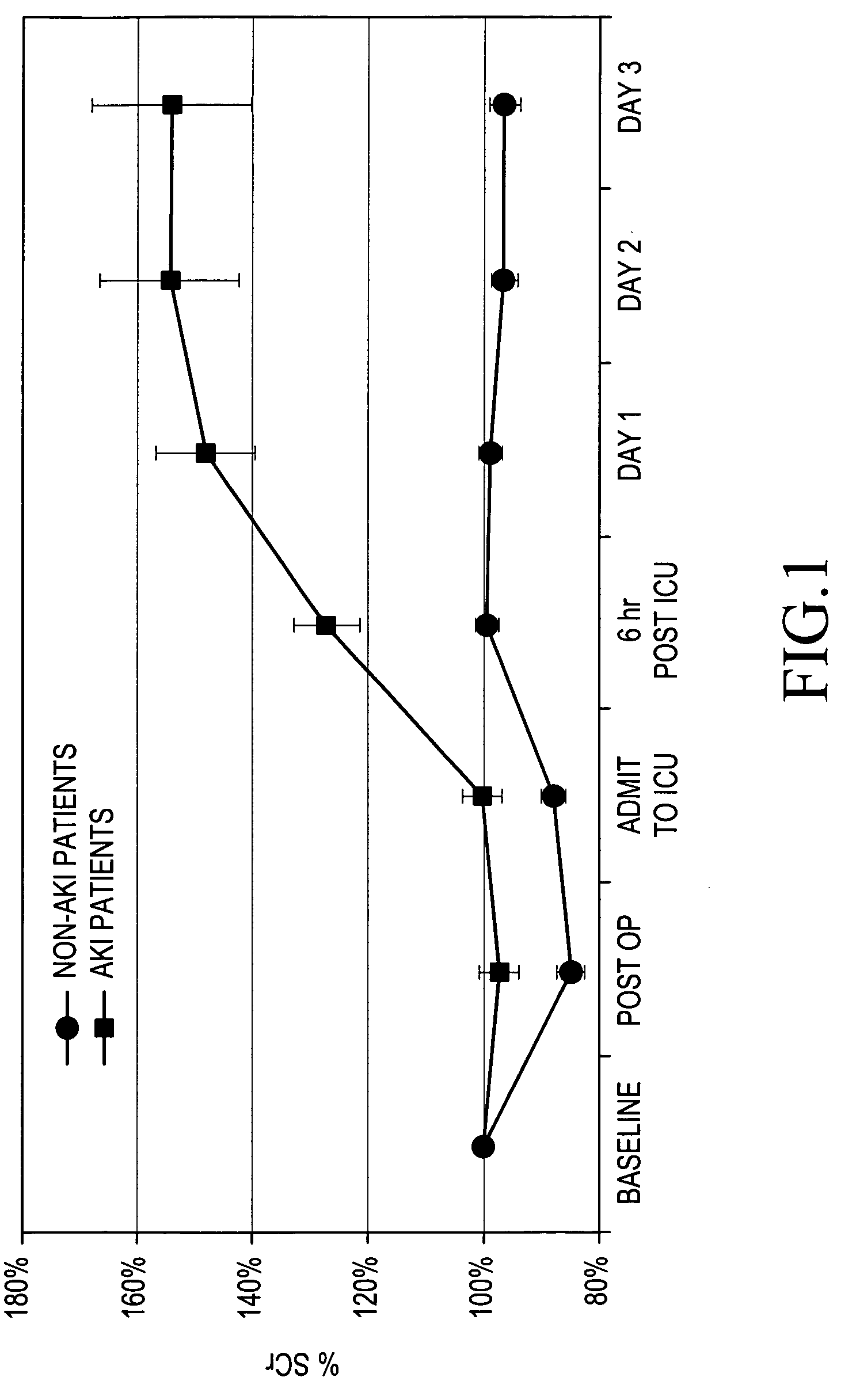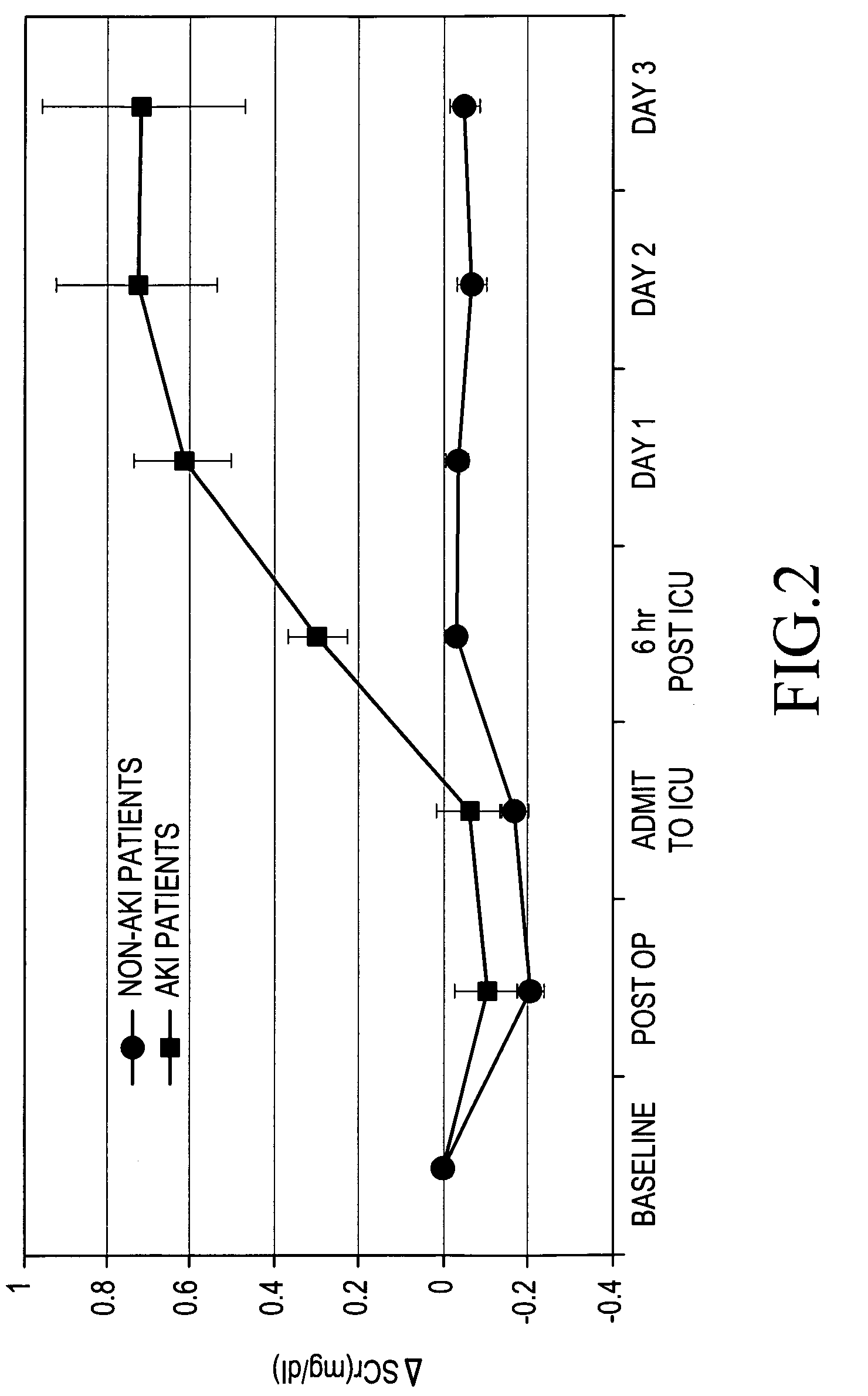Method for the early identification and prediction of kidney injury
a kidney injury and early detection technology, applied in the field of early identification and prediction of kidney damage, can solve the problems of dialysis, no drug therapy available, and patients will require rrt,
- Summary
- Abstract
- Description
- Claims
- Application Information
AI Technical Summary
Benefits of technology
Problems solved by technology
Method used
Image
Examples
example 1
Use of πGST as a Biomarker for AKI in Patients Undergoing CT Surgery
[0068]A retrospective study of 68 patients who had undergone elective CT surgery at the University of Chicago Hospital was carried out.
[0069]The patients were screened and approached for enrollment. The patients were excluded if they met any of the following criteria:
Pre-existing End Stage Renal Disease (ESRD) (on RRT) or Renal Transplant.
[0070]Age <18 years old.
Use of radiocontrast within 24 hours of surgery.
Change in thyroid hormone replacement dose in the last 2 weeks
Change in thyroid chronic corticosteroids dose in the last 2 weeks
Unstable renal function (Δ Serum Creatinine ≧0.2 mg / dl in the last 2 months of Oliguria defined as <400 ml / day).
[0071]Urine and blood samples were collected and stored.
[0072]The urine samples were tested for the presence of πGST using the aforementioned πGST EIA available from Biotrin International Limited (Catalogue Number BIO85).
[0073]Serum Creatinine (SCr) was measured using the Jaf...
example 2
Use of πGST as a Biomarker for a Requirement for RRT Patients Undergoing CT Surgery
[0085]A study was carried out on the 68 patients, the subject of Example 1, using the same methodology for the detection of SCr and πGST.
[0086]Seven patients out of the 68 patients tested required RRT. The results are shown in Table 2.
TABLE 2BaselineCreatinineHours inCreatinineat RRTICU prior(mg / dL)(mg / dL)to RRTIndication15.035.425.3Refractory Hyperkalemia (6.0), Oliguria21.493.4851.2Anuria, Elevated creatinine, Shock1.36 post-op31.31.4221.6Volume overload, Hypoxia, Oliguria, Hemodynamic instability*AKI not diagnosed using current SCr measures*41.23.7926.8Lactic Acidosis Oliguria, Shock, Elevated creatinine50.991.283Lactic Acidosis Anuria, Shock,*AKI not diagnosed using current SCr measures*61.191.745.3Anuria, Shock (3 pressors), Volume overload. Acidosis71.662.881Volume overload, pulmonary edema. Shock
[0087]The time point at which patients requiring RRT would be first diagnosed is shown in Table 3.
TA...
PUM
| Property | Measurement | Unit |
|---|---|---|
| concentration | aaaaa | aaaaa |
| concentration | aaaaa | aaaaa |
| concentration | aaaaa | aaaaa |
Abstract
Description
Claims
Application Information
 Login to View More
Login to View More - R&D
- Intellectual Property
- Life Sciences
- Materials
- Tech Scout
- Unparalleled Data Quality
- Higher Quality Content
- 60% Fewer Hallucinations
Browse by: Latest US Patents, China's latest patents, Technical Efficacy Thesaurus, Application Domain, Technology Topic, Popular Technical Reports.
© 2025 PatSnap. All rights reserved.Legal|Privacy policy|Modern Slavery Act Transparency Statement|Sitemap|About US| Contact US: help@patsnap.com



